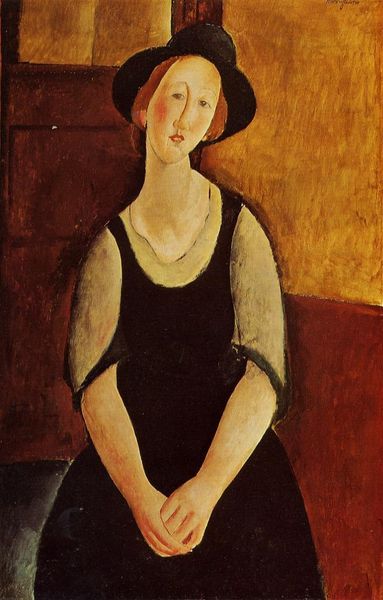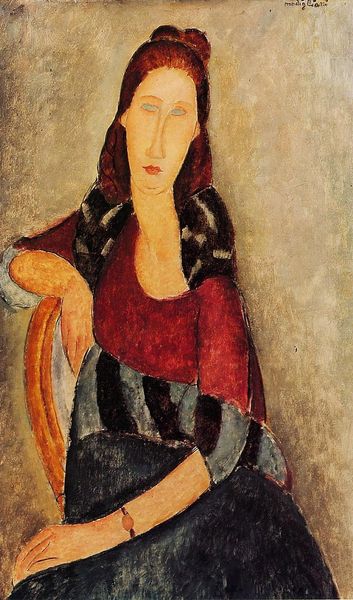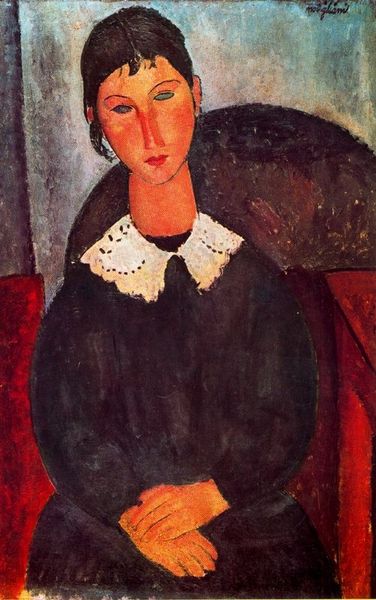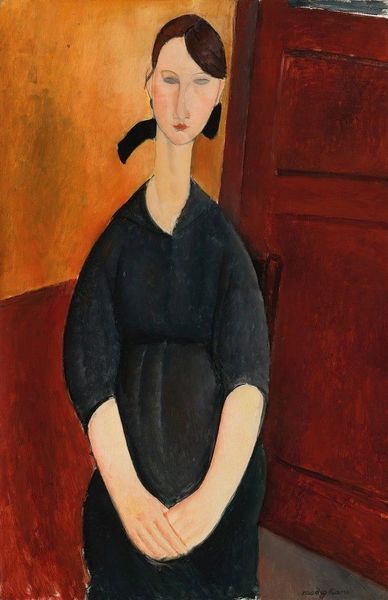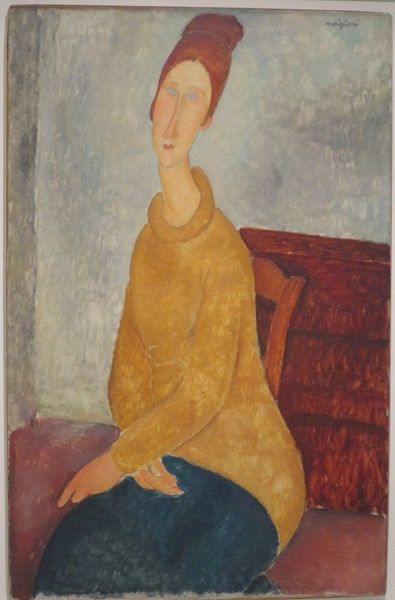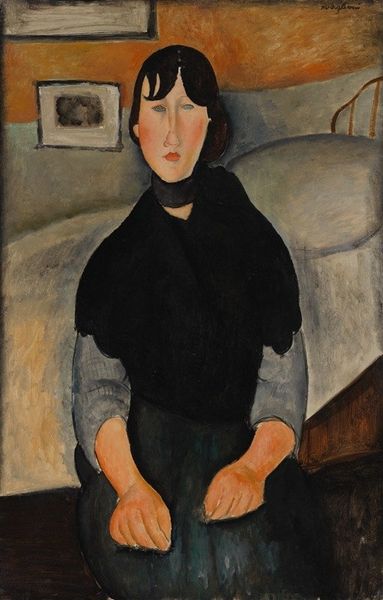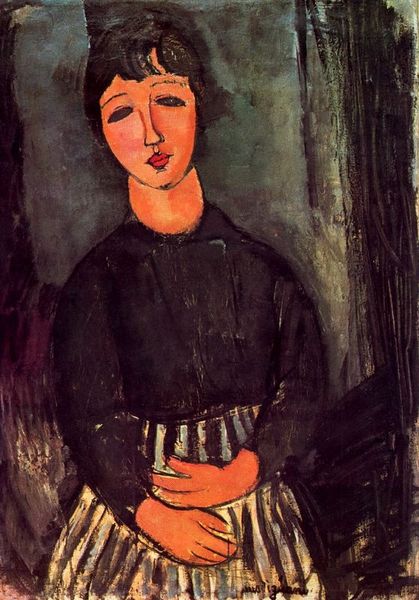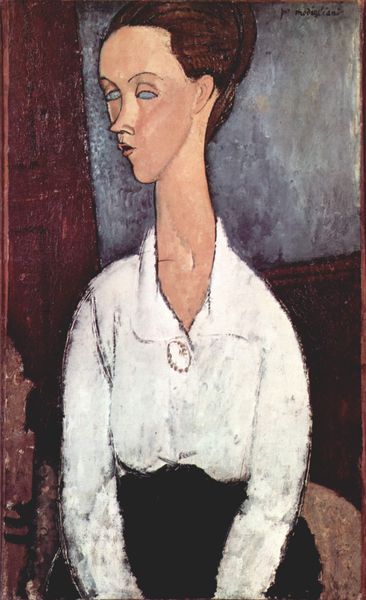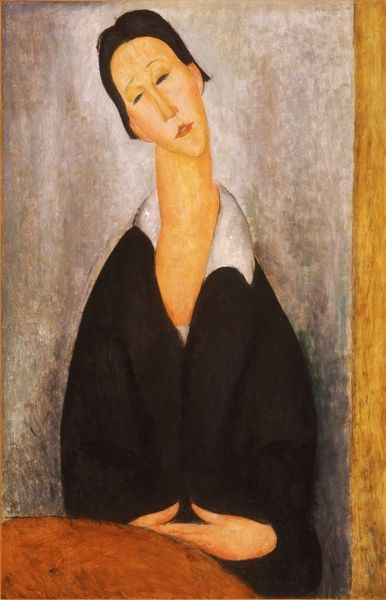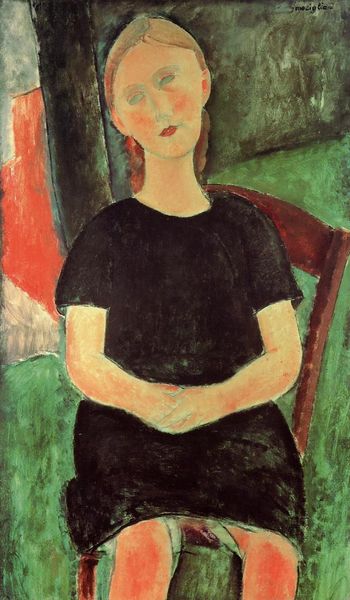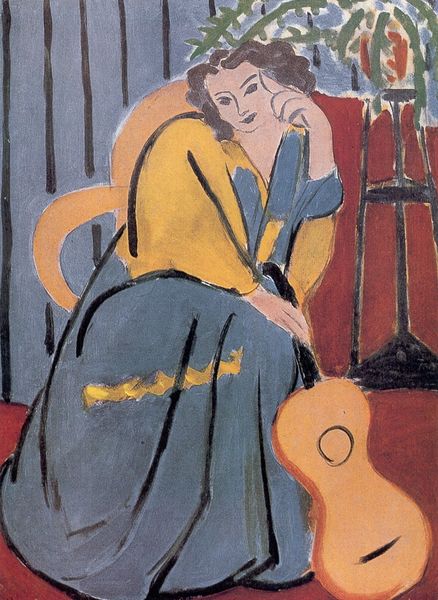
Dimensions: 129.5 x 91.4 cm
Copyright: Public domain
Editor: So, here we have Modigliani’s "Portrait of Jeanne Hebuterne in a Blue Chair," painted in 1918 with oil paints. It has such a muted palette and this distinctive elongated form... What strikes you most about this painting? Curator: What interests me here is the tension between Modigliani's supposedly bohemian lifestyle and the social and economic realities reflected in the materials. He often struggled financially, and we need to consider what kind of pigments and canvases were available to him. Did these material limitations influence his artistic choices? Also, consider the production and social circulation of portraiture at this time. Who commissioned them and why? Was this portrait destined for a bourgeois parlor, or did it serve a different purpose in Modigliani's artistic and social circles? Editor: That's fascinating. I hadn't considered the impact of material constraints on his style. The portrait seems so personal. Curator: But think about Jeanne's dress, too, her attire, the chair. All crafted or manufactured through specific processes. The chair itself might represent the status of Jeanne or Modigliani's aspiration to reach a wealthy audience who would enjoy the lifestyle represented in the piece. Her clothing could be ready-made, reflecting the advent of factory production, or tailored from available fabrics, mirroring wartime shortages. The surface itself might reflect his choices between mass-produced or handcrafted options. How do those options inflect meaning? Editor: So, you are saying it’s less about an intimate connection, more about understanding how production and consumption shaped not only his work, but also its reception in society at the time? Curator: Precisely. By focusing on those considerations, we break down assumptions about artistic genius and confront the lived experiences embedded in every artwork. What do you make of that shift in perspective? Editor: It opens up so many new questions and layers. Thanks, it’s really reframed my view. Curator: It allows for a broader, more historically grounded engagement with art, moving beyond just aesthetics.
Comments
No comments
Be the first to comment and join the conversation on the ultimate creative platform.

